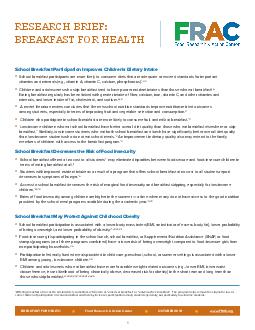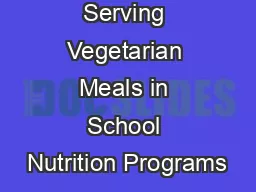PDF-We also nd that subsidized meals at school or day care are bene cial for childrens weight
Author : calandra-battersby | Published Date : 2014-11-11
Kimbro Rigby 2014 24 Breakfast for Health Spring 2014 FRAC Food Research and Action Center 1200 18th St NW Suite 400 Washington DC 20036 S5734657347573485734857349
Presentation Embed Code
Download Presentation
Download Presentation The PPT/PDF document "We also nd that subsidized meals at sch..." is the property of its rightful owner. Permission is granted to download and print the materials on this website for personal, non-commercial use only, and to display it on your personal computer provided you do not modify the materials and that you retain all copyright notices contained in the materials. By downloading content from our website, you accept the terms of this agreement.
We also nd that subsidized meals at school or day care are bene cial for childrens weight: Transcript
Download Rules Of Document
"We also nd that subsidized meals at school or day care are bene cial for childrens weight"The content belongs to its owner. You may download and print it for personal use, without modification, and keep all copyright notices. By downloading, you agree to these terms.
Related Documents














